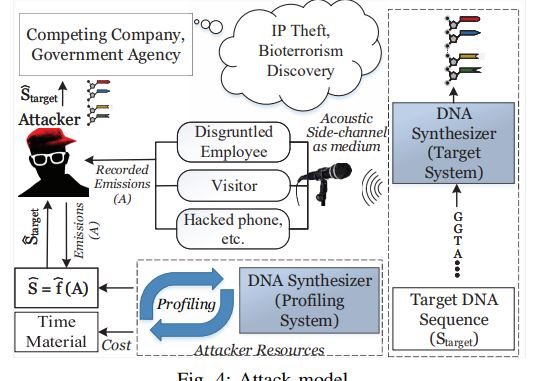
Researchers at the University of California proposed to use microphone to ‘steal’ the DNA sequence being synthesized.
Two days’ worth of recordings was enough to train algorithms that could surmise unknown strings of DNA with 86 percent accuracy. By combining them with off-the-shelf DNA sequencing software, the researchers boosted the accuracy to almost 100 percent, especially for longer sequences. Some members of the team tested the hack, which they call Oligo Snoop, on DNA sequences chosen by the other members. They included genetic instructions for making human insulin, a binding peptide commonly used in drug development, and conotoxin, a lethal protein found in the venom of cone snails.
https://www.wired.com/story/hackers-listen-synthetic-dna-machines/
The purpose of their exercise is to convince engineers that they must design bioinstrumentation with these kinds of security leaks in mind. […] “To me this was an academic exercise,” says Emily Leproust, CEO of DNA maker Twist Bioscience. “In the real world this is not an issue,” she says. Twist’s DNA synthesizers, which the company developed in-house, use ink jet printing and make almost no sound, she says. Each machine can print more than a million oligonucleotides at a time, so it would be very difficult to acoustically parse an individual sequence from it, she says.
https://spectrum.ieee.org/the-human-os/biomedical/ethics/how-to-steal-dna-with-sound
- Faezi, S. et al. Oligo-Snoop : A Non-Invasive Side Channel Attack Against DNA Synthesis Machines. in Network and Distributed Systems Security (NDSS) Symposium (2019).